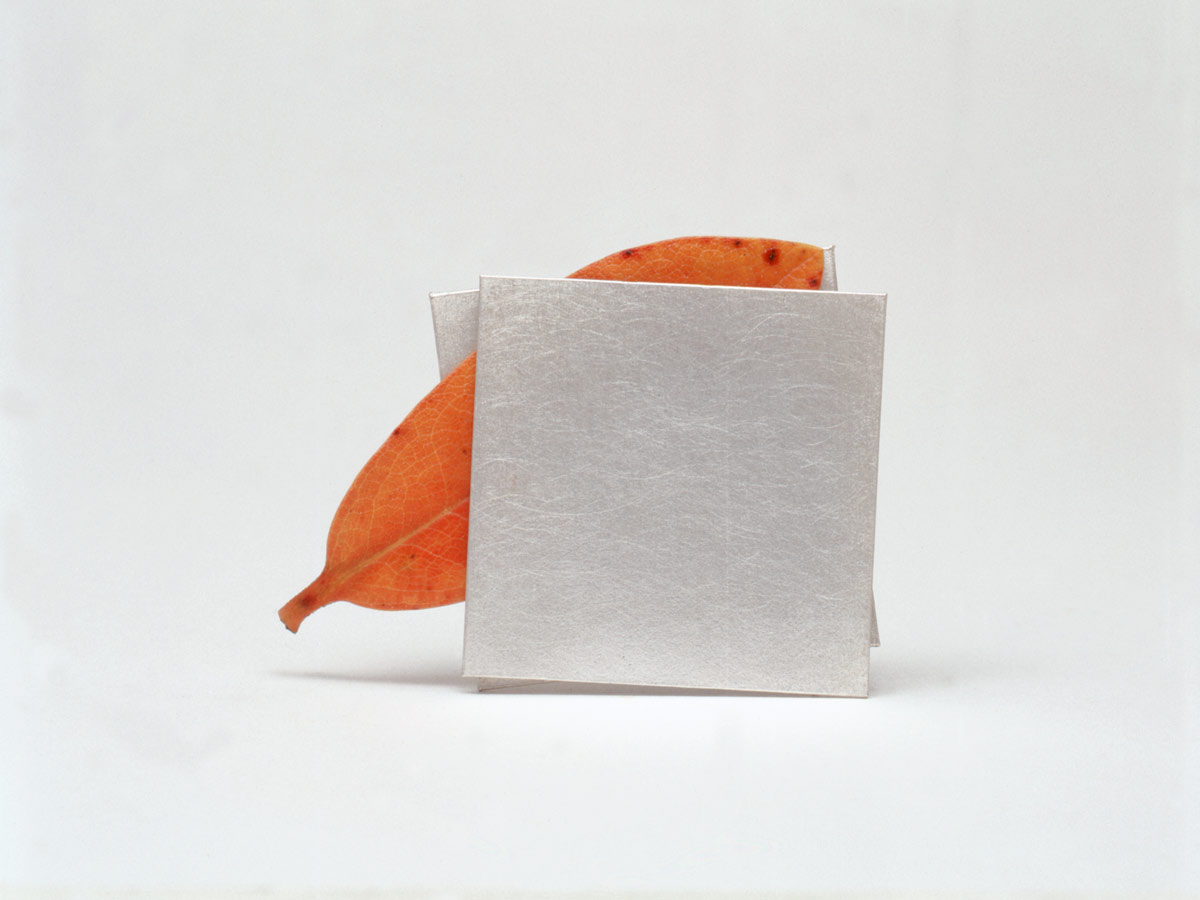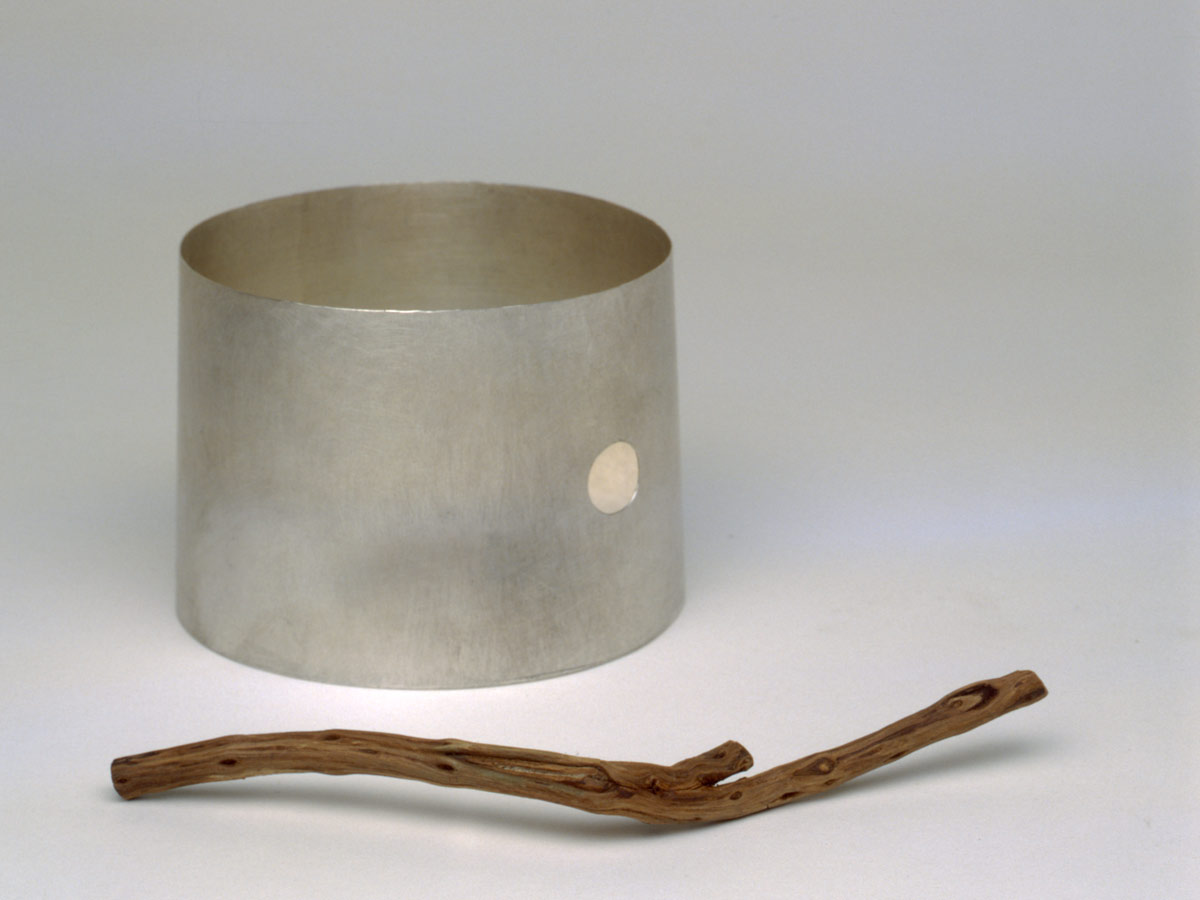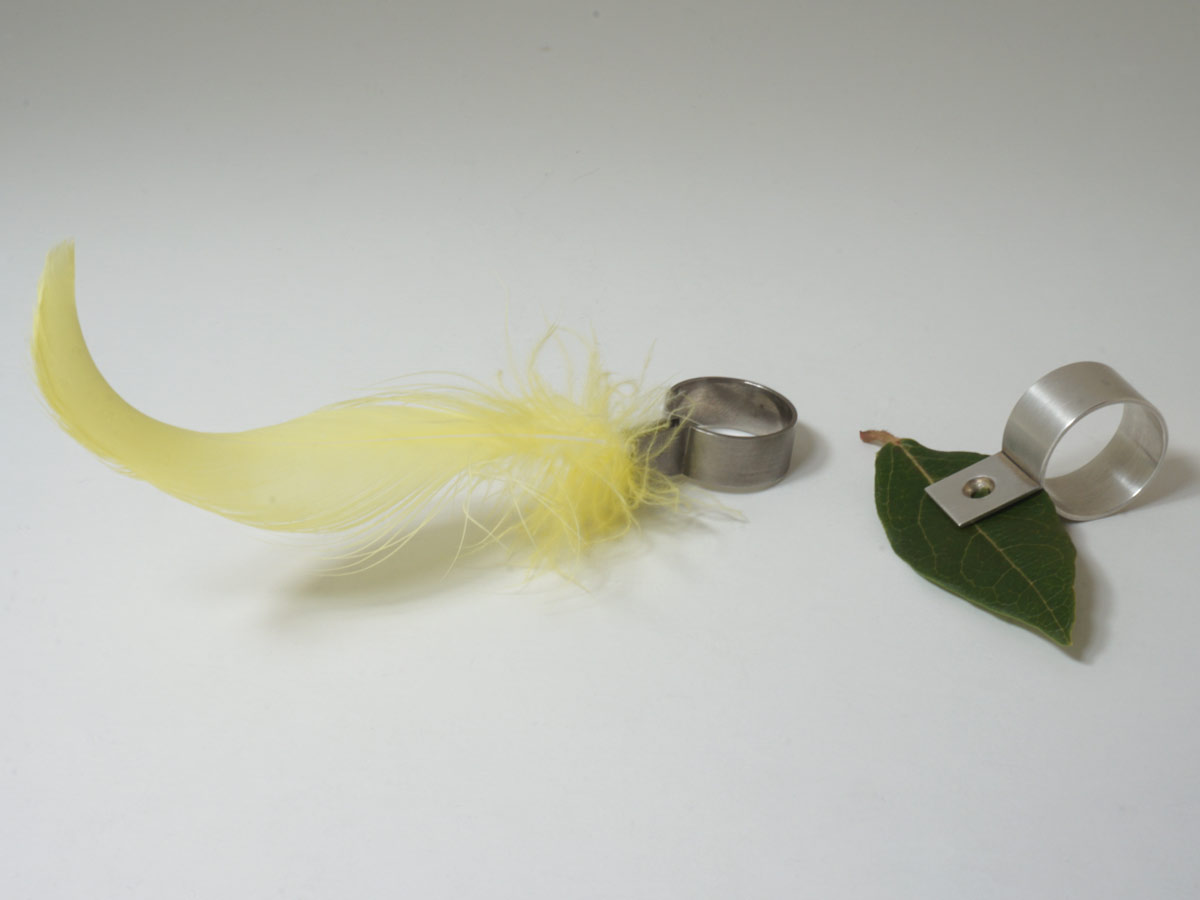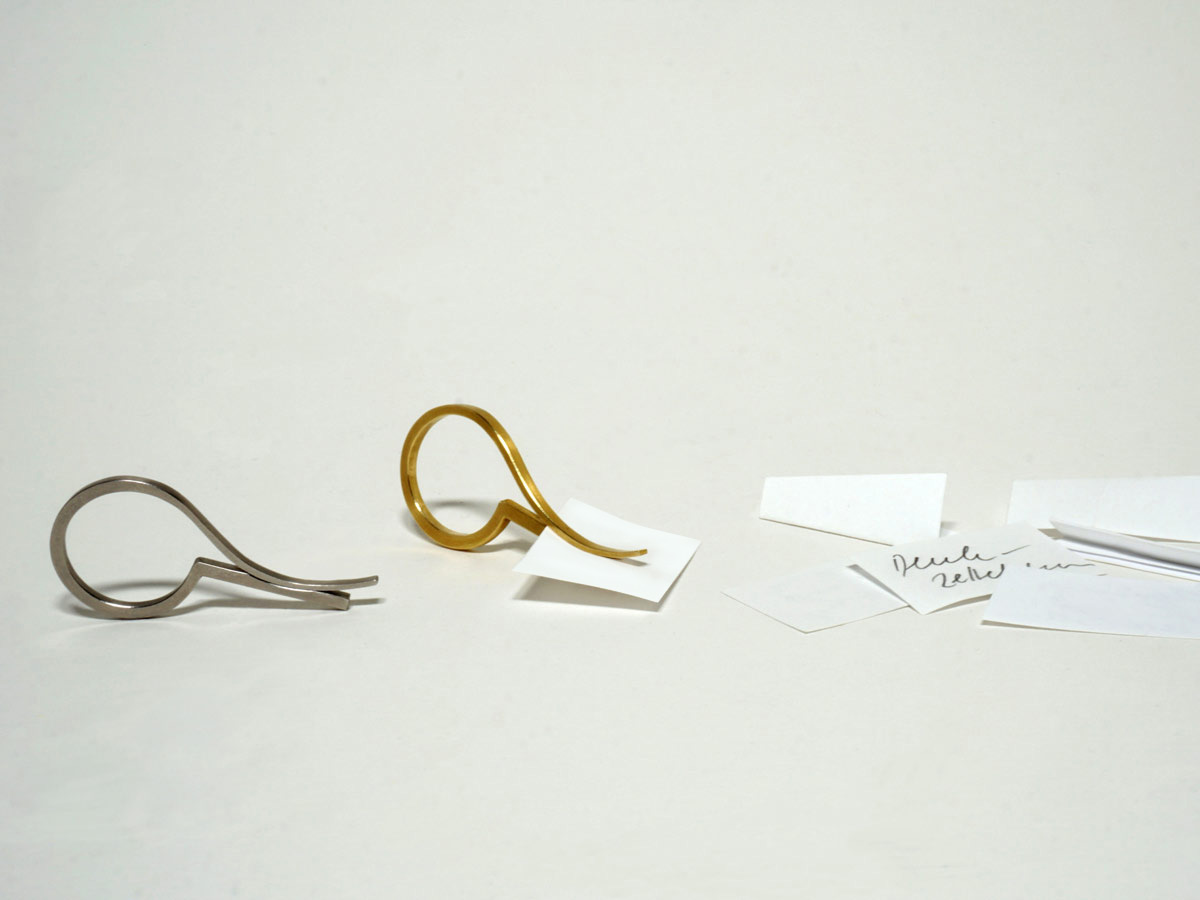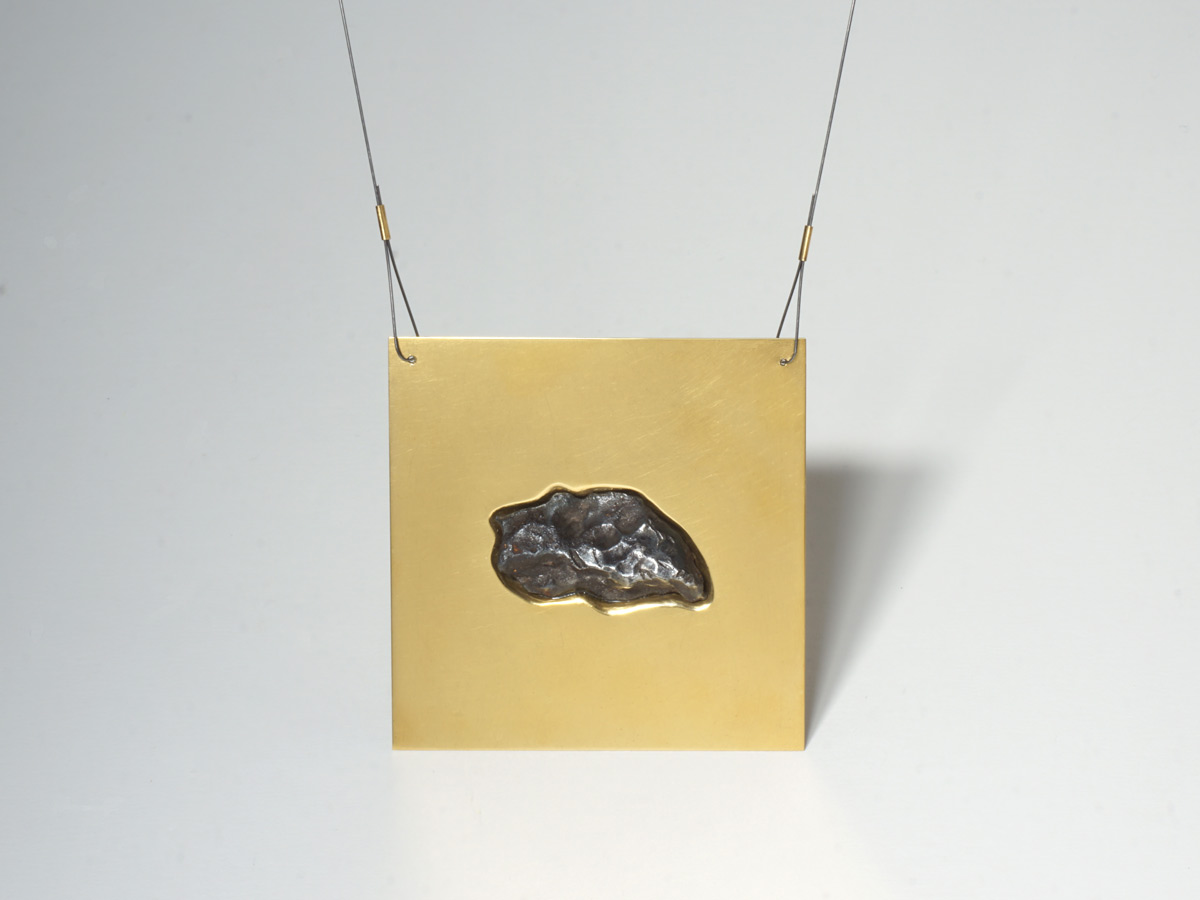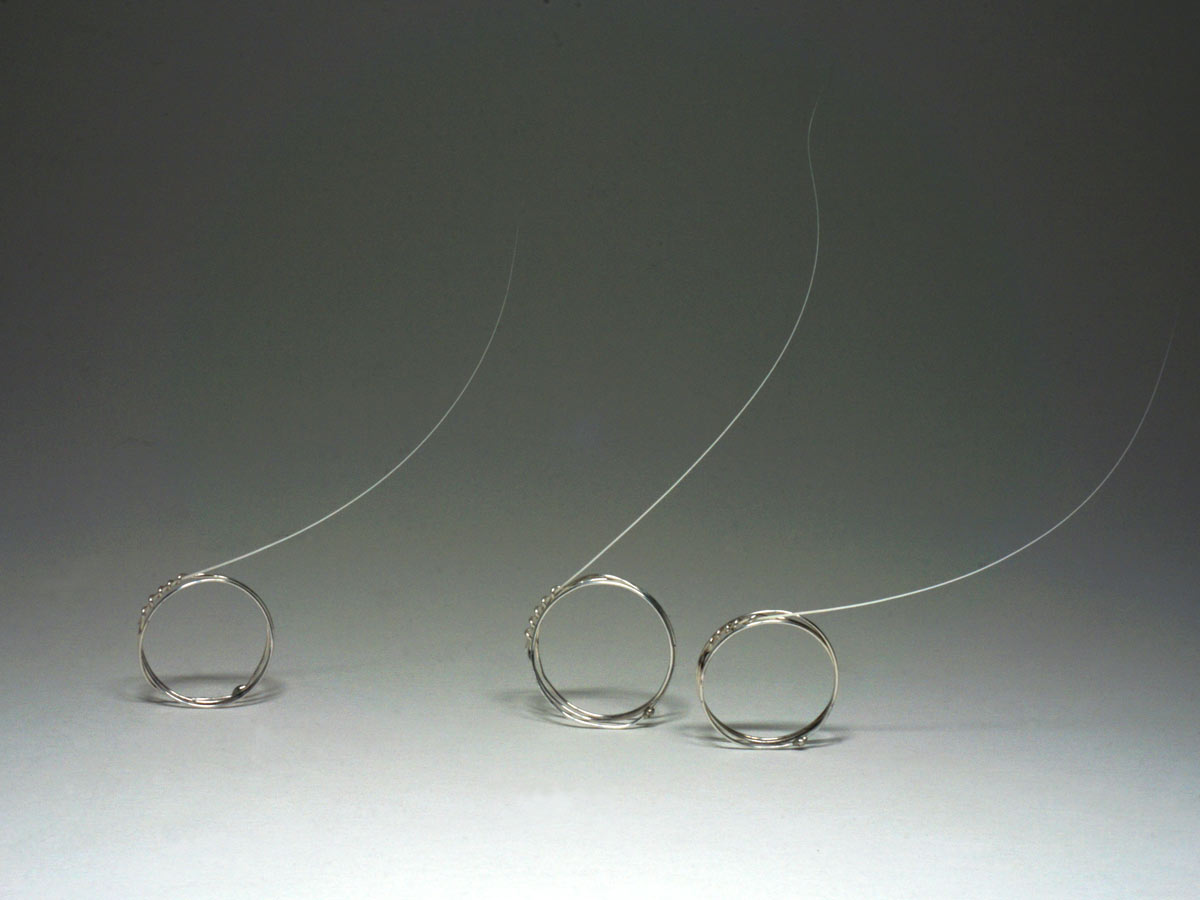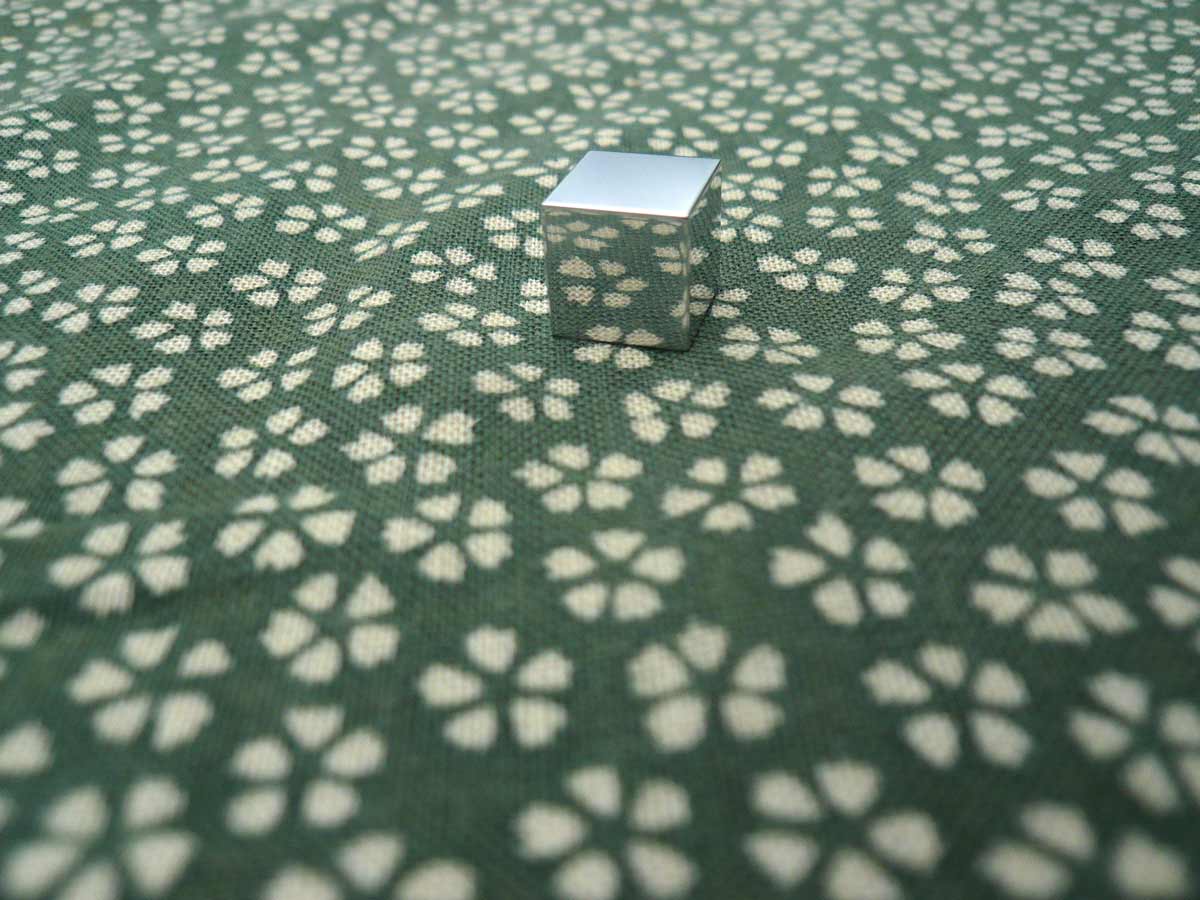Contrast
This is where the clash between nature and geometry is most visible. Simple geometric shapes become temporary carriers of things from nature, such as an interestingly shaped branch, a beautifully coloured leaf, or a feather. Extending this principle, specially shaped rings can hold anything that is flat, including colourful scraps of paper and little notes. Without these additions, the jewellery is incomplete.
Here, the geometric is dependent on the organic and vice versa. But this dependence also applies to irregularly shaped objects that are firmly connected to a geometric reference figure.
